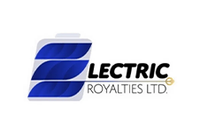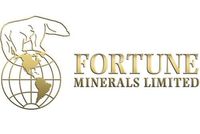The Future of Critical Mineral Security in Canada and the US
The Canada-US Joint Action Plan could act as a spark for the emerging Canadian critical minerals industry.
As the world becomes increasingly digital and as we transition toward a low-carbon future, many experts are preparing for a significant spike in demand for critical metals, minerals and rare earth elements (REEs). At the moment, China dominates the global REE market, claiming more than 70 percent of annual production. For certain heavy REEs, such as dysprosium and terbium, China is the world’s sole supplier.
In an effort to minimize reliance on Chinese exports and to ensure the future competitiveness of North American minerals industries, Canada has partnered with the US in a Joint Action Plan on Critical Minerals Collaboration that focuses on improving critical mineral security in both countries.
American collaboration with Canada, which holds some of the world’s most substantial reserves of REEs, including more than 15 million tonnes of rare earth oxides, is expected to attract major investment to Canadian exploration and mining projects while promoting job creation and economic growth in a variety of downstream industries. While Canada is not currently a global producer of critical minerals, its proven reserves, which include heavy REEs, represent one of the few sustainable new sources of critical minerals and REEs outside of China’s virtual monopoly.
Critical minerals have long been recognized as essential to both economic and national security. Both Canada and the US rely on critical minerals supplies to support diverse industries, including electronics, telecommunications, energy, transportation, aerospace, defence and countless others. For both Canadians and Americans, critical minerals have been woven through the fabric of daily life, from the strontium used in fireworks to the helium found in MRI machines. REEs act as the key components in many of the electronic devices we use on a daily basis.
Introducing the Canada-US Joint Action Plan
Roughly C$2.6 billion worth of goods and services moves across the Canada-US border every day. The Canada-US Joint Action Plan hopes to leverage enhanced collaboration between the two countries as well as existing integrated North American supply chains to advance the secure access of critical minerals while stimulating economic growth, bolstering North American competitiveness across global markets and creating jobs for both Canadians and Americans. The Joint Action Plan was officially finalized on January 9, 2020.
The US has identified 35 minerals as critical to both economic and national security. Canada currently acts as an important supplier for 13 of these minerals, and has significant potential to become a reliable source for a number of others, many of which are REEs. Canada is currently America’s leading supplier of indium, potash, aluminum and tellurium, and the second-largest supplier of tungsten, magnesium and niobium. Canada is also responsible for roughly one quarter of America’s uranium supply and has been for more than 75 years.
The new Joint Action Plan is expected to improve the security of North American critical minerals and ensure that mineral industries remain stable into the future by guiding cooperation in areas such as industry engagement, research and development, supply chain modeling, improved information sharing and other efforts to secure critical minerals supply chains for strategic industries.
Supporting critical mineral supply chains outside of China
China began flooding the global market with a cheap supply of critical minerals in the 1980s. The country now accounts for more than 70 percent of annual REE production worldwide while also controlling global refining and processing industries, which represent critical bottlenecks for national security requirements in the US and other parts of the world. Rare earths are the foundation of America’s high-end defense systems.
As laid out in its Made in China 2025 initiative — the country’s new industrial policy aimed at the rapid growth of high-tech sectors and its already enormous manufacturing base — the Chinese government plans to target a diverse array of industries with considerable strategic and economic significance. Several of these industries, including the electric vehicle (EV) market, are steadily emerging amidst global initiatives to reduce carbon emissions.
The rise of the EV market is evident from the success of companies like Tesla (NASDAQ:TSLA), which saw more than a 600 percent increase in its stock in 2020, making it one of the most valuable companies in the world with a US$800 billion market cap. Major players in the automotive industry are following suit, with Ford (NYSE:F) electrifying its iconic Mustang as the new Ford Mustang Mach-E, and General Motors (NYSE:GM) planning to release its first-ever electric Hummer, the Hummer EV, in Fall 2022. It’s clear that the major automakers see the EV movement as the future of the industry as consumers continue to shift away from internal combustion engines to more eco-friendly and forward-thinking technologies.
The statistics show China’s dominance. China currently holds nearly 70 percent of the world’s EV battery manufacturing capacity while the US has less than 10 percent. Out of the 142 lithium-ion factories geared toward mass production and under development worldwide as of May 2020, China will be home to 107 while the US will host nine. China is responsible for more than 60 percent of the world’s cathode supplies, 80 percent of the anodes used in batteries and the vast majority of permanent magnets found in EV motors. Lastly, Chinese EV startup NIO (NYSE:NIO) recently surpassed General Motors and Daimler (ETR:DAI) as the world’s fourth most valuable auto maker.
In the wake of a newly Democratic US government and its recent burst of climate orders, experts believe that leaders of the EV transition must exert significant influence over the mining and processing of critical minerals involved in batteries and other key components of EVs and advanced fuel vehicles — and that these leaders will set the standards and terms of trade for the future of global transportation. Many of these critical minerals are currently produced in unstable jurisdictions. For example, the Democratic Republic of Congo is currently responsible for approximately 70 percent of the world’s cobalt production. With EV interest at an all-time high, North American governments are looking to establish a sustainable critical minerals industry that will support a budding EV market in the event of political instability or trade disputes.
Positioning Canada as a global producer of critical minerals
China’s dominance over the world’s critical minerals market represents a pressing strategic vulnerability for North American and European industries, especially as lofty climate policy goals are expected to place increased pressure toward the EV market and its supply chains. The Canada-US Joint Action Plan targets international cooperation and industry engagement to build downstream value and the North American capacity to refine and process mineral input. North American sustainability in the critical minerals sector will benefit a diverse range of industries, from aerospace and defense to consumer electronics.
Cobalt, a central element in lithium-ion batteries, is one of the key targets in the Canada-US Joint Action Plan. Demand for cobalt is primarily driven by the EV sector, which had a strong finish in the last quarter of 2020 despite the COVID-pandemic. A global EV forecast by Deloitte predicts a compound annual growth rate of 29 percent over the next 10 years, growing from 2.5 million EV sales in 2020 to 11.5 million in 2025 before reaching 31.1 million by 2030.
As part of the Canada-US Joint Action Plan for Critical Minerals Collaboration, Canada-based First Cobalt (TSXV:FCC,OTCQX:FTSSF) recently received C$10 million in public funding on behalf of the Government of Canada and the Government of Ontario. This funding will allow the company to expand its refinery located in Northern Ontario. As global EV sales are expected to set new records, First Cobalt is well-positioned to play a critical role in the emerging North American EV supply chain.
Takeaway
The new Canada-US Joint Action Plan for Critical Minerals Collaboration should be seen as a positive for investors looking for investment opportunities related to the growing EV market. This collaborative effort could act as a spark for the emerging Canadian critical minerals industry, which benefits from widespread and sustainable reserves, low-cost clean energy and a fast-paced innovation sector that is focused on refining and recycling rare earths in Canada.
This INNSpired article was written as part of an advertising campaign for a company that is no longer a client of INN. This INNSpired article provides information which was sourced by INN, written according to INN's editorial standards, in order to help investors learn more about the company. The company’s campaign fees paid for INN to create and update this INNSpired article. INN does not provide investment advice and the information on this profile should not be considered a recommendation to buy or sell any security. INN does not endorse or recommend the business, products, services or securities of any company profiled. If your company would benefit from being associated with INN's trusted news and education for investors, please contact us.


